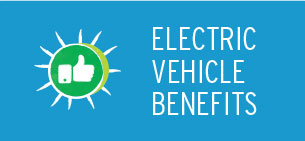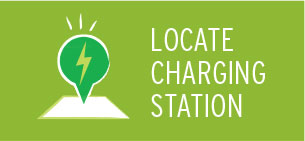
CHARGINGEV Charging and InfrastructureCharging EVs regularly provides the energy required to keep them moving. In the case of plug-in hybrid vehicles, the charging minimizes the amount of gasoline the cars consume. The length of time needed to fully recharge an EV depends on battery capacity (size) and how much charge the battery has lost. Charging your EV requires plugging in to electric vehicle supply equipment (EVSE). EVSE is the equipment used to deliver electrical energy from an electricity source (ex: the electricity running to your home’s outlets) to an EV. Communication occurs between the EVSE and the EV to ensure electricity is supplied appropriately and safely. EVSE is classified into several categories according to the maximum amount of power provided to the battery. Two types – Level 1 and Level 2 – provide alternating current (AC) and are most commonly used for charging EVs at home, work and in public places. Level 1 (120 volt) is provided through a typical household outlet, while Level 2 (240 volt) is provided through specialized EVSE / charging stations. Compared to Level 1, a Level-2 charging station is capable of much faster charging, which makes driving an EV more convenient. On the other hand, Level-1 charging needs no special equipment installed. In fact, most EVs come standard with a portable Level-1 cord set, equipped with a:
DC Fast Charging – often referred to as Level 3 (600 volt) – can be provided, using special equipment, but is only suitable to use with select vehicles. At this time, Level-3 charging is not widely accessible. Level-2 EVSE is available in many models from various manufacturers and vendors. Even though Manitoba has substantial infrastructure already in place for plugging in, some of these electrical outlets may not be suitable for EV charging. Residential outlets can be part of a circuit used to power multiple lights and other electrical devices. They could become overloaded if used to charge an EV. In these situations, what’s needed is a dedicated circuit for EV charging, installed by a licensed electrician. As well, some commercial parking lots operate in a load-restricted or cycled manner, and using them may result in your EV receiving a lower charge than expected or no charge at all. If a parking stall is NOT specifically designated for EV use, you should consult with the parking lot or building manager to make sure it can provide adequate power to your vehicle. A broad discussion of EV-charging infrastructure is provided in CEATI INTERNATIONAL Inc.’s January 2013 report. It’s titled CANADIAN EV INFRASTRUCTURE DEPLOYMENT GUIDELINE and is available at www.ceati.com/freepublications/0536_Web.pdf. How long will it take to charge my EV?The amount of time needed to fully charge an EV battery, when completely depleted, depends on several factors including:
The table below (source: CEATI INTERNATIONAL Inc.’s January 2013 report titled CANADIAN EV INFRASTRUCTURE DEPLOYMENT GUIDELINE) provides provides some estimates on the length of time it takes to charge an EV – based on the size of the battery and the type of charging system being used.
Remember that the time required to charge an EV will vary by vehicle make and model, amperage of the charging system, and the condition and capacity of the battery. When the battery is completely empty, and Level-1 charging is used (an ordinary 120-volt socket), the Chevrolet Volt would require approximately eight hours and the Nissan Leaf, approximately 20 hours. Then again, on most occasions, the charge will take place before the battery is completely empty, which reduces the time needed for a full charge. Furthermore, using a faster, Level-2, 240-volt charging station will cut the charge time approximately in half, or even more. Standard EV charge times and the required charging levels are directly influenced by the EV driver’s need for range (of distance) and the driver’s availability to recharge. Home ChargingAs an EV driver, you will likely charge your EV overnight at home using Level 1 or Level 2 EVSE. Charging at a single-family home – typically in your garage – gives you the benefit of Manitoba’s low, stable electricity rates combined with convenience. A Level-2, 240-volt charging station, installed in your garage or driveway, provides the option of much faster charging at home and makes it more convenient to drive an electric vehicle. Keep in mind that installations of Level-2 charging stations must comply with all local electrical codes and regulations. For more information, refer to www.hydro.mb.ca/customer_services/permits_and_inspections/ Since there is no standard for the location of the vehicle’s charging port, the cord should be long enough to connect to any point within the parking space. And, in a winter environment like Manitoba’s, caution should be exercised when shovelling snow around the cord. Workplace ChargingAs electric vehicles become more common in Manitoba, it’s reasonable to assume more employers will be interested in providing staff with workplace charging. This will allow EV owners to extend the range of their plug-in EVs and make greener commutes, while employers will gain value by demonstrating environmentally-conscious leadership. Charging Map (Find a Charging Station Near You)The network of charging stations that support electric driving is expanding all the time, and Manitobans can expect to encounter more EV charging stations every year. The Canadian Automobile Association (CAA), in partnership with Plug’n Drive Ontario and Electric Mobility Canada, are attempting to track and display EV charging stations as they pop up across Canada. To find a charging station near you, go to www.caa.ca/evstations.
|


 |
||||||||||||||||||||||||||||||||||||||||||||||||||||||||||||||||
